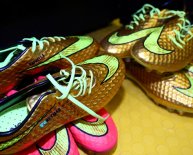
Composition samples
 Lower molecular body weight polyphenols including proanthocyanidin oligomers could be examined after HPLC separation on either reversed-phase or normal period columns. However, these methods tend to be time consuming and that can have bad resolution as polymer chain length and structural diversity boost. The detection of greater molecular fat compounds, plus the dedication of molecular body weight distributions, stay major challenges in polyphenol evaluation.
Lower molecular body weight polyphenols including proanthocyanidin oligomers could be examined after HPLC separation on either reversed-phase or normal period columns. However, these methods tend to be time consuming and that can have bad resolution as polymer chain length and structural diversity boost. The detection of greater molecular fat compounds, plus the dedication of molecular body weight distributions, stay major challenges in polyphenol evaluation.
Approaches according to direct mass spectrometry (MS) evaluation being suggested to aid conquer these problems tend to be assessed. Thus, direct flow shot electrospray ionization mass spectrometry evaluation can be used to establish polyphenol fingerprints of complex extracts such as for example in wine. This system allowed discrimination of samples on the basis of their particular phenolic (for example. anthocyanin, phenolic acid and flavan-3-ol) compositions, but larger oligomers and polymers were poorly detectable. Detection of greater molecular fat proanthocyanidins was also restricted with matrix-assisted laser desorption ionization (MALDI) MS, suggesting they are hard to desorb as gas-phase ions. The size distribution of polymeric portions could, however, be based on examining the mass distributions of bovine serum albumin/proanthocyanidin buildings making use of MALDI-TOF-MS.
Graphical abstract
Techniques considering direct ESI-TOF and MALDI-TOF mass spectrometry tend to be proposed for profiling phenolic compositions of plant extracts as well as dedication of proanthocyanidin molecular fat distributions. Higher molecular fat proanthocyanidins tend to be tough to identify considering poor ionization and fragmentation, but it has already been overcome by analyzing their necessary protein complexes.
Keywords
- Mass spectrometry;
- Phenolic substances;
- Proanthocyanidins

















